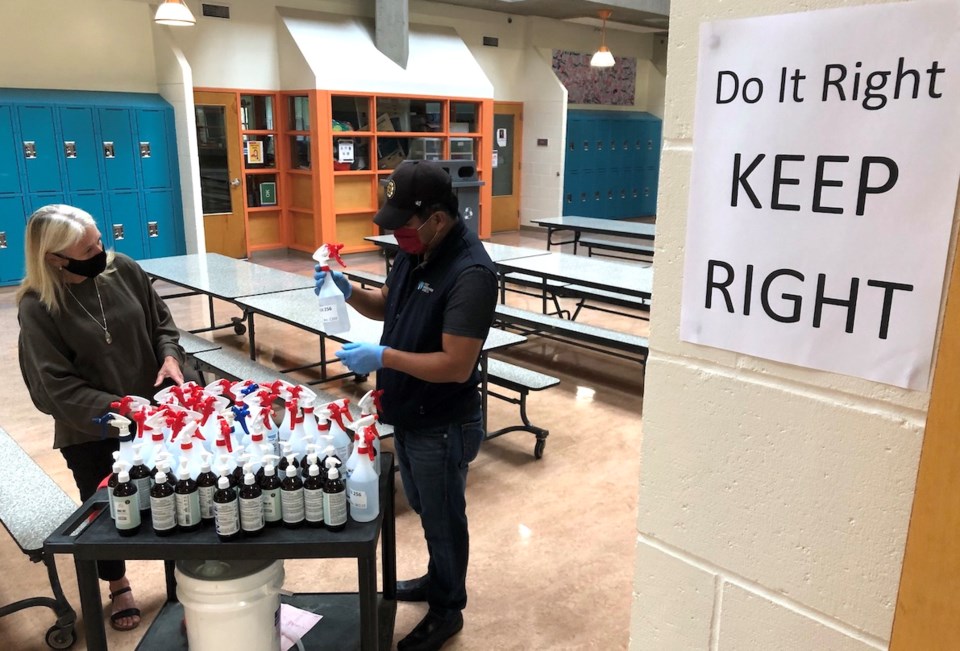Among all the things a pandemic teaches you, one truth became very clear to Rockridge Secondary principal Judy Duncan and her staff when schools were closed last March: “Students really need connections with their teachers and teachers really miss not seeing their students. We all need that social/emotional piece.”
After spending the summer sorting out the mind-numbing logistics of how to keep students and staff safe, Duncan is looking forward to welcoming students back to the West Vancouver high school on Sept. 14.
Some of the changes are relatively minor, such as one-way foot traffic patterns in hallways and a staggered start to the morning. Instead of dropping things off at their locker, students will have to carry everything with them throughout the day. Lockers will remain off limits.
Other changes, such as sanitizing your hands when you enter a classroom and wearing a mask in communal areas, will seem routine after months of quarantine and physical distancing. There will be no cafeteria service for many of the reasons restaurants are limiting indoor dining.
Spending an entire half-day on one course will take a bit of getting used to, as will the mix of being in school and working from home.
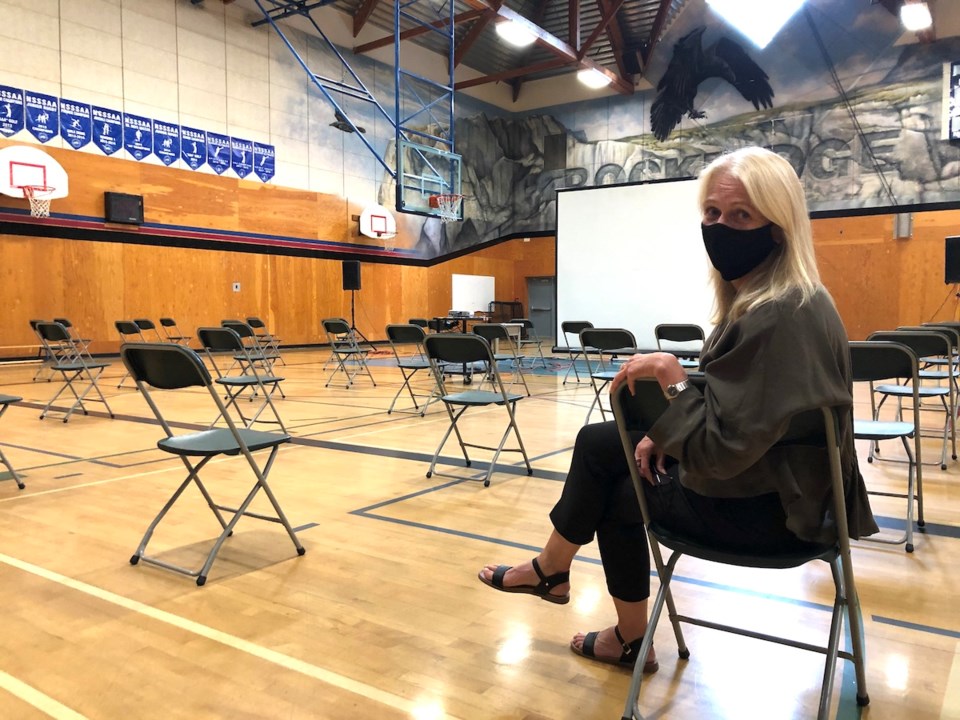
The toughest change for many students is the cancellation of sports competitions and indoor gym classes. All field trips are also on hold.
Still, there are many positives, Duncan says. All electives, including music, continue to be offered. These are often subjects that students are passionately interested in, or are part of future career plans. Students will have opportunities to meet individually with teachers. There are supports for students, including designated spaces where students can work independently if it’s not feasible to work from home. Workshops about how to recognize signs of anxiety or depression are being held so resources can quickly be put into action to help students who are struggling emotionally. More custodial staff have been hired to meet daily sanitization standards.
Lunches and breaks are being staggered to reduce contact bottlenecks. (Older students can continue to go across the street to the Caulfeild mall during their lunch breaks, although Duncan cautions that restaurants and cafés also have new rules about how many people can be inside at any given time.) Classroom ingress and egress will be through separate doors where possible.
Classrooms are being decluttered to make it easier to keep students apart. Each room has its own sanitizers.
While other West Vancouver schools have decided on 8:30 and 8:45 start times, Rockridge decided on half the students arriving at 8:15 and half at 8:30.
One particular challenge for Rockridge is that it’s the catchment school for many Bowen Island students who must take the ferry to Horseshoe Bay, as well as high school students from Lions Bay.
School buses for Lions Bay and Bowen Island students will run every morning, as well as every afternoon at 3 p.m. As of now, the busing schedule has not been changed to accommodate half-day in-school learning. However, buses will be available in the morning and midday for student orientations on Sept. 10 and Sept. 11.
On Tuesday and Thursday afternoons, which are designated for remote learning, Duncan still expects the school will be humming with students engaged in a variety of activities and classes. “Students are welcome to work at school until their bus arrives at 3 p.m.,” she says.
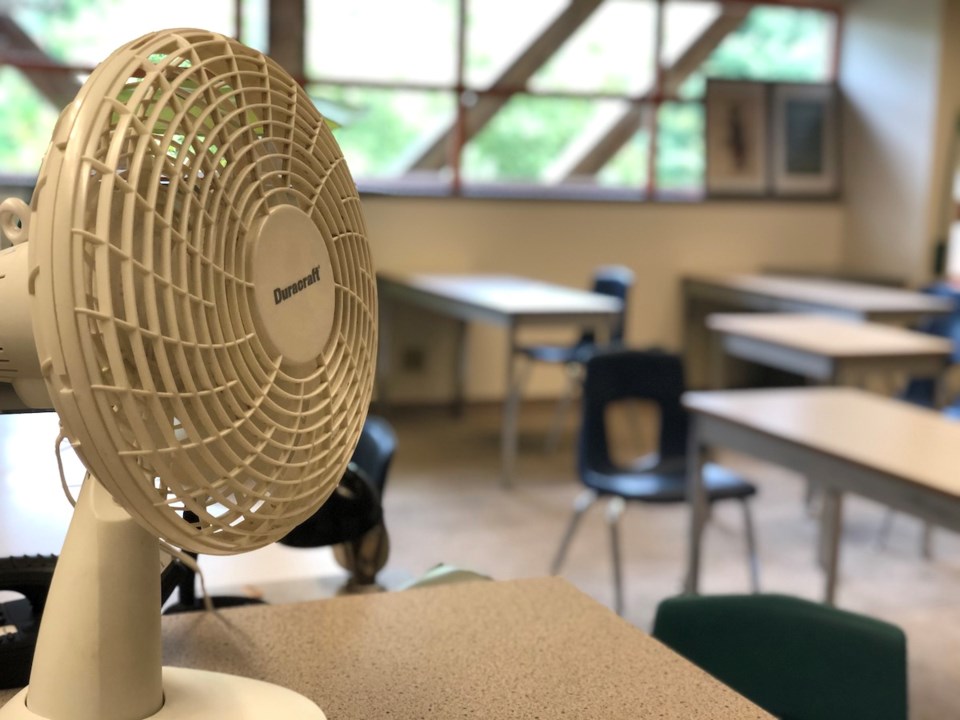
The plan is to break the year into four quarters. In general, students will take two subjects per quarter.
Duncan sees the advantages of dedicating an entire half-day to a single subject. “Before, one of the biggest challenges for students was having eight courses from September to June. We spent quite a lot of time on time management and organizational skills. They would forget things or complain that assignments were due at the same time.
“I’m excited about the new system because there will only be two courses to focus on. It will be easier for many students.”
She recognizes that this will create new challenges — such as not having studied a subject for several months before returning to school next year — but teachers will make the appropriate adaptations.
The biggest logistical challenge in coming up with these arrangements was how to limit the number of people each student and staff will be potentially exposed to during the day. That doesn’t just mean one-on-one encounters. If a student is in a classroom with 29 other people for one period, and then mixes with students who were in five different classroom environments, what’s the exposure factor?
Working with the province’s public health and education ministries, this cohort limit was set at a maximum of 120 although Duncan says that at Rockridge it will not often exceed 60.
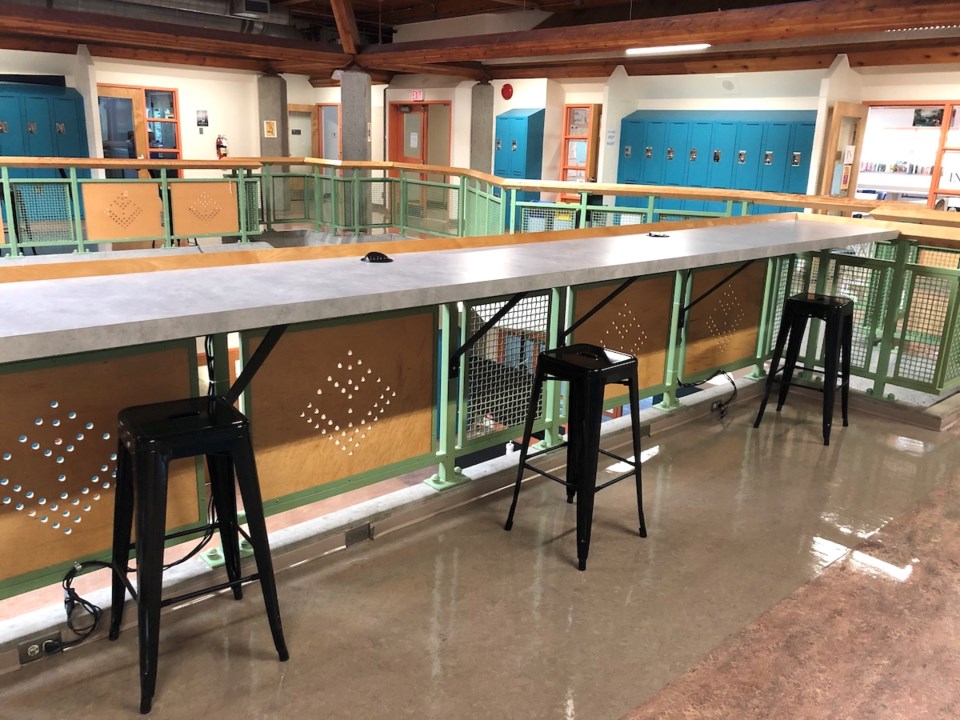
Scheduling will take a lot of getting used to. Details of how the week will unfold are here.
The exception is what school life will be like for Grade 8 students. Extra effort has been made to give them the most rounded experience possible. “They can hardly wait to be in this big school but they’re nervous, too. We’re doing an extra-long orientation for them,” Duncan says. “We want them to feel like this is a family and they belong.”
Unlike students in the upper grades, they will be spending each day, both morning and afternoon, in school. They will be eating lunch in their classrooms and have designated areas where they can gather outside.
Duncan has faith that, once the rationale behind many of the changes is explained, students will adapt to and accept the new normal. “We’re going to talk to them about why these protocols are important and the science behind them,” she says. “I have confidence in the students.”
She’s also promising to be nimble. “We’re starting really tight,” Duncan says. “We’ll see how it looks and may be able to ease off on some of the restrictions. We’ll make decisions as we move along.”
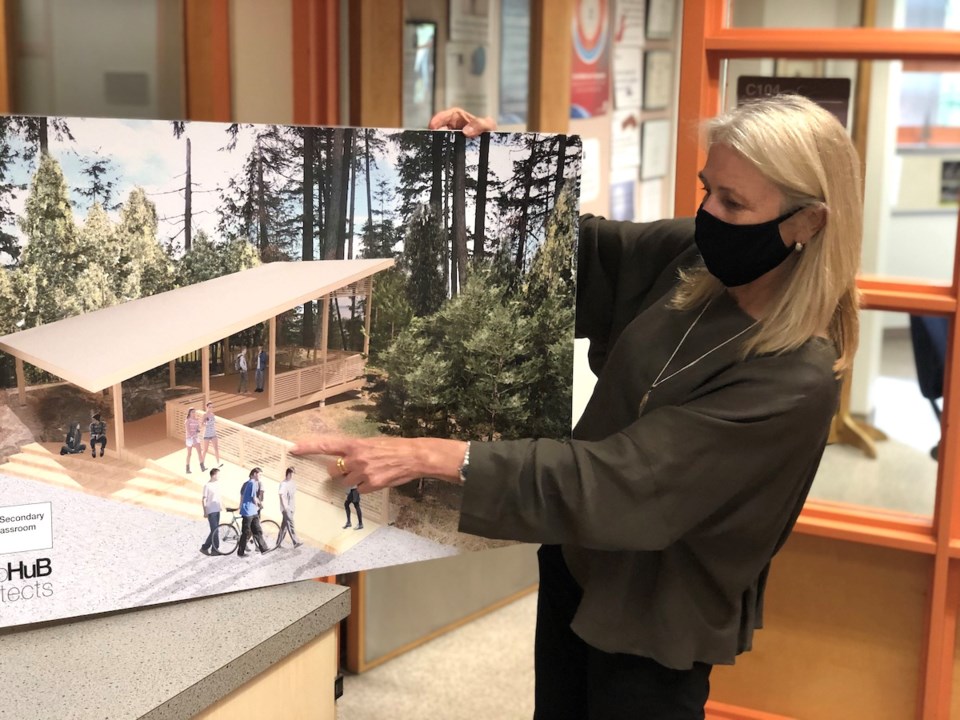
Of an enrolment of roughly 960 students, Duncan says more than 900 have indicated they will be attending classes at Rockridge.
Duncan is proud of the way everyone has pulled together to make this work. “The past six months have been really hard. We are in education because we love kids. Having them around is what fuels us. For some of our students it's been almost six months that they haven't been in school. They miss us and we miss them. We really are looking forward to having that buzz in our school again and seeing all those faces in our building.”
Martha Perkins is the North Shore News’ Indigenous and civic affairs reporter. This reporting beat is made possible by the Local Journalism Initiative.
